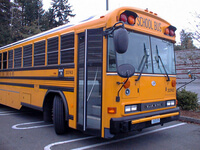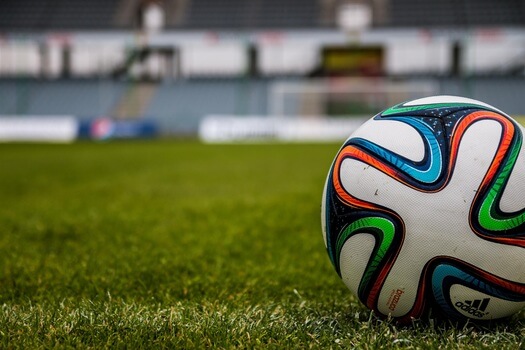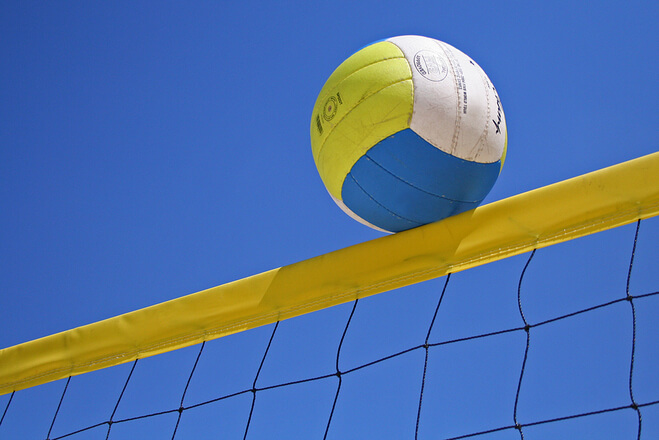Hopefully this finds you well and enjoying a well deserved vacation. It’s a relief to have a respite from the stress that hits teachers and coaches from so many directions. Instead of creating an environment that works for everyone, administrators, parents, and students are too often more focused on outcomes. Schools that use a collegial approach to education rather than a competitive one are great. Hopefully you are in one. Having said that, it brings to mind an idea that can start you on your next school year differently. Let me explain.

During my teaching career, I came to realize that with students at all different skill levels and having vastly different experiences in what we teach, it was simply not enough to grade them on participation, whether they were dressed for class or not, if they were great athletes, or if they got a good grade on a quiz or two. I wanted to teach. I wanted my students to want to learn. And, I knew if they learned and became productive citizens in class, they would LOVE being there. And, yes, I wanted that too.
Achieving this vision while I taught in junior high was easy. I still have fond memories of how each unit ended with everyone, me included, on such a high that we almost hated to move on to something new. Why? Because the energy, the level of teamwork, and the outpouring of enthusiasm had blossomed over the course of the unit. The resulting crescendo was so great that starting from square one on something new was a bit of a let down. Truthfully, even the non-athletes were involved and excited by the end of the unit. They had learned to become solid citizens on their teams making whatever contributions they could, and had been praised for it by teammates who were supportive and helpful. My classes had learned to accept individual differences, respect the effort of the less athletically gifted, and were there applauding each improvement they observed. I was so proud of them that I could burst.
So, when my wonderful junior high school closed and we were forced to merge with our feed-in high school, I looked forward to the change, not having a clue about how special our school had been. I assumed that the major difference would be that I had an opportunity to reunite with kids I taught and loved before, something I really looked forward to!
It didn’t work out that way. In truth, I was shocked at every level. Everything was different; from the facilities, to the amount of equipment my colleagues brought out, to how each department functioned, to the need to follow chain of command, to dealing with my junior-high alumni as high school students, to the physically and psychologically unsafe conditions that assaulted my senses during class – both indoors and out. Clearly though, my first major surprise came from my wonderful ex-students – a class of girls who had been just terrific in junior high school.
Eager to begin where we left off, I got them out on the field for soccer, and after some warm-up drills, was horrified once game play began. I couldn’t believe what I was seeing. The only thing moving on the field was the ball. I’m not exaggerating. Two students moved while the rest (about 46 of them) stood in place and kicked the ball back and forth as if it were a hot potato. I had to change that, but how?

Despite our wonderful rapport, despite our history together, despite their wonderful junior high school play, the girls made no attempt to do more than dress for class and get out on the field. They were respectful, but they could care less. Not only was I not used to that but I didn’t want to get used to it. Several weeks passed during which I tried everything I knew to change the atmosphere and drum up some motivation. First, I used simple encouragement, then I played the guilt card, then I simply complained, then I tried begging them out of their indifference. Nothing worked. As the final weeks of the grading period approached, I casually commented that I had no clue how to grade them on their soccer expertise since the only thing moving on the field was the ball. I acknowledged that I couldn’t grade them on that or on their field positioning since each position had responsibilities (responsibilities they once knew) that required moving as the ball moved whether they had the ball or not. I commented that typical soccer requires players moving about 75% of the time.
Not for one minute did I think that my casual comment would change a thing, but it did.
Someone asked a question. In response, I drew a diagram on the blackboard (we had a portable blackboard in the gym) to show them how they should move up the field on offense. I kept the explanation short, not wanting to spend the period talking. We went out. They got into their kickoff positions. I blew the whistle to start the game and for the first time in weeks, they were off and running. Deliriously happy, I decided that the next time we met I would diagram the interaction between the offense and defense and remind them how the defense worked together. That sparked even more engagement. By the end of the unit, the class was not only moving but I could sense growing enthusiasm and thought finally, I had my old kids back. Actually, I hadn’t, which is something that became patently clear when we started volleyball.
Once again I was shocked. Volleyball was a much loved sport in junior high, but my now upper-class women just stood on the court not even attempting to get ready for the ball. There was no movement until it was too late. You know how that goes. Someone served the ball over the net and in a nanosecond the ball was on the ground. No points were played out and the activity was BORING. I couldn’t believe what I was seeing and could have never expected that reaction to something they once really loved. I thought about it, reluctant to pull the grading card again, especially so early in the unit, but I couldn’t help myself. I called them to the blackboard after a volleyball warm-up and told them that I would be looking to grade them for something different each day and that to achieve the first 10 points I had to see them looking at the ball while it was in play. Need I tell you how much difference that first 10 points made? They had been proficient in the serve, the bump pass, and were fairly decent at the set when they were in eighth grade. What they needed was to pay attention to the game, which they presently weren’t doing. They just didn’t seem interested in trying. I hoped that by grading the fundamentals I would get them back in the game. And, I was right.

With them feeling the need to watch the ball, the ball stayed in play, the games got exciting, and the enthusiasm increased. Once again I was happy. Better yet, I now knew what button to push to get things going if the kids needed some motivation to get them jump started – though I did wish they would start on their own.
I continued to play around with the issue of grading and the following year had an epiphany. I realized that one of my guys, Mike – not the best football player in class – actually learned everything I asked of his class during the flag football unit. When I sat down to grade the group, I started wondering what to do if I set clear goals and my students reached them. I wondered if they reached them all shouldn’t they get a perfect grade? But, a perfect grade.who gives that? Still, the more I thought about it, the clearer it became.
Mike had learned everything that had been taught him. He did all I could expect of any of my students during class. His performance, his knowledge as tested on a quiz and on the field, his use of strategy, his understanding of the rules, his participation level, his ability to work within his team were all top notch. I had set appropriate goals. I had asked the whole class to meet them and he did. After a lot of personal reflection, I decided that Mike had earned the very first 100% I’d ever awarded anyone. Of course, that didn’t help him one bit the following year when I was out of school for six weeks recovering from knee surgery. When Mike saw a substitute teacher he decided not to come to gym for the whole six weeks. Wow, was that weird, failing a kid who achieved 100% just the year before.
What I learned from all of these experiences is that recognizing and grading progressive learning goals can be a powerful teaching tool and one that teachers do not utilize enough. By setting and announcing achievable goals, students learn what is important to work on. They also learn that scoring is not everything and that to score a player frequently needs to be set up by his or her teammates.
Proper goal setting teaches students what to focus on. It rewards improvement. It helps students feel better about their performance when they achieve what is asked and when what is asked is something within their reach. It helps students understand how individuals working together can make a powerful whole. It recognizes that possessing basic skills is important. It helps classmates understand the value of progress and it makes clear that everyone has a way to improve. It helps kids recognize that some have to try harder than others and that such effort should be appreciated. It even helps teachers understand what they should be emphasizing when they positively reinforce their students in class.
Grading on the basis of achieving realistic learning goals could and should be done for every activity. As students mature and have more experience in an activity, more can and should be expected of them. But it must be within reach of what can be learned within class. The goals you set should not require that they “major” in that activity. And the learning goals should not be based on what some students are learning outside of class in athletics or community activities.
Drawing up a skills rubric for each activity and each experience level takes thought, time and experience, especially if your goal is to create a progression that sets a standard for an achievable “A”. In my book, Complete Physical Education Plans for Grades 5-12 I listed what I felt that teachers could expect to be accomplished by the beginner, the intermediate and the advanced class student when they are given a proper chance to learn and practice what is being taught at each level of proficiency. When I set out to write the units in my book, I wanted to lead teachers through a unit that gives students plenty of repetitions of basic movement patterns I wanted to gives students daily opportunities to use whatever equipment is necessary. And I wanted to give students lots of opportunity to use both the movement patterns and equipment in the context in which it should be used whether it be during dance, in sports games, during a gymnastic routine, while working out in the weight room, or anything else you might want to teach.
I encourage you do take time this summer to think about grading as something that can help you teach more successfully. Emphasize exactly what you want your students to learn. If you keep the scope of your expectations to what is achievable in the short time you are with your students, you will help our students to succeed and have fun doing it. If you haven’t used this approach, give it a try. It really works!
Have a great summer and a great start to your new school year.

